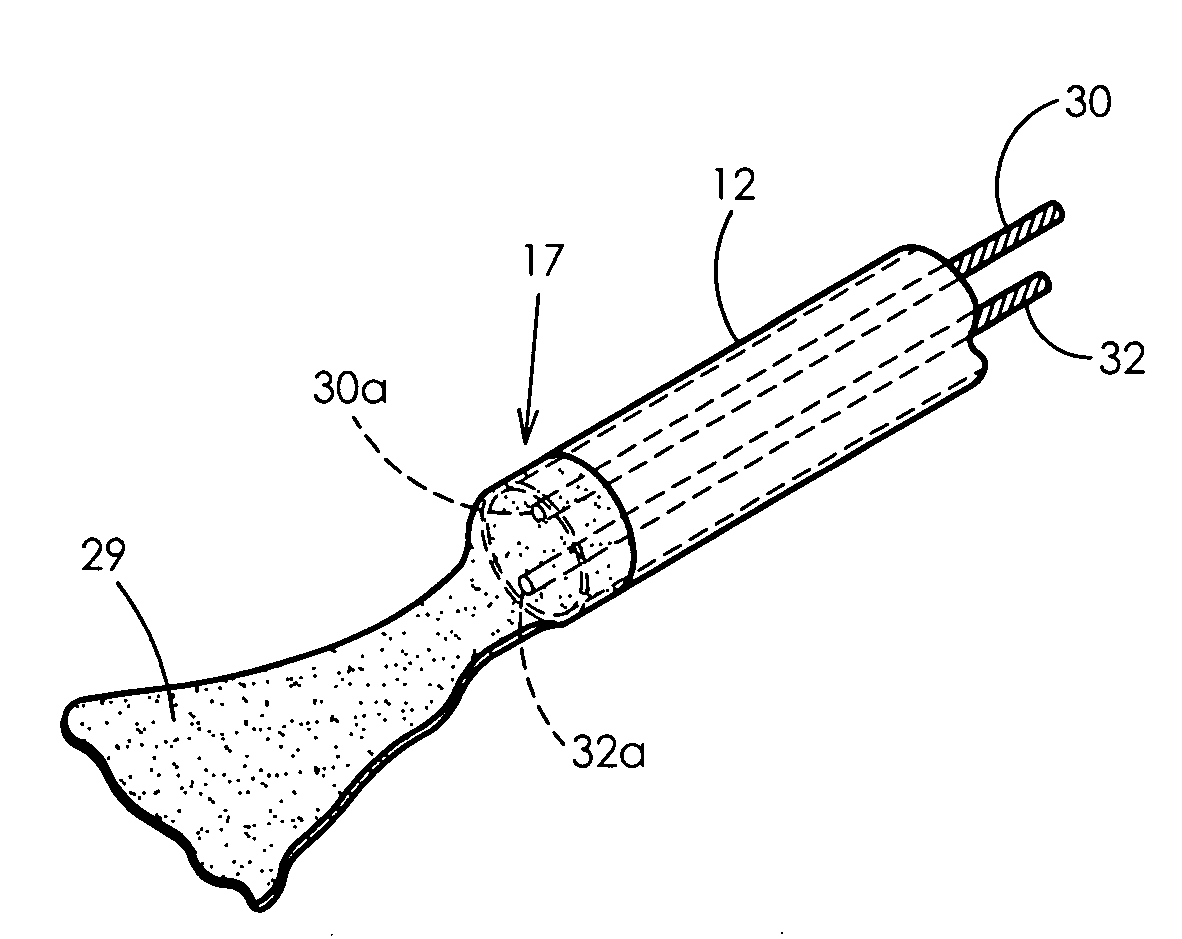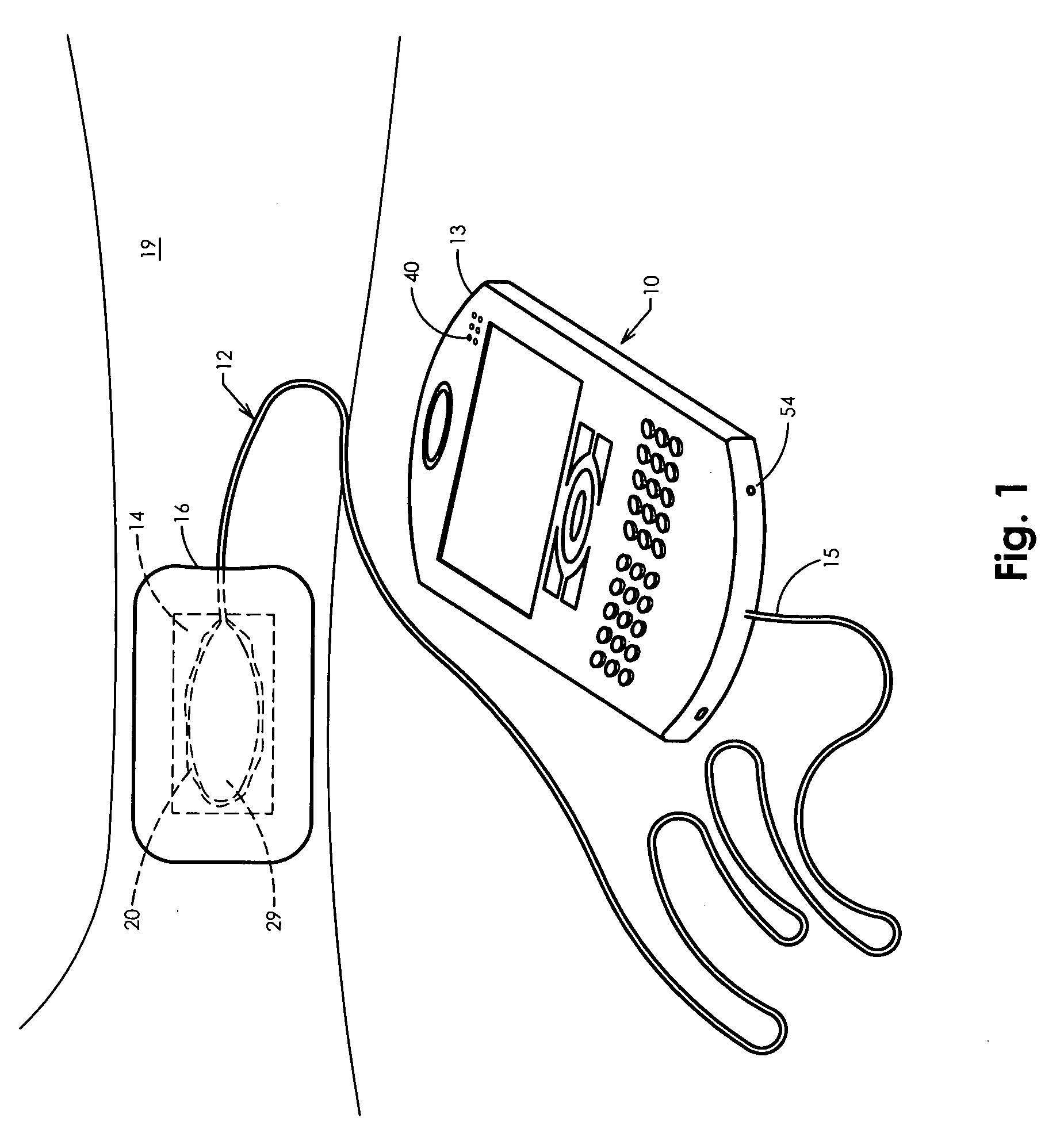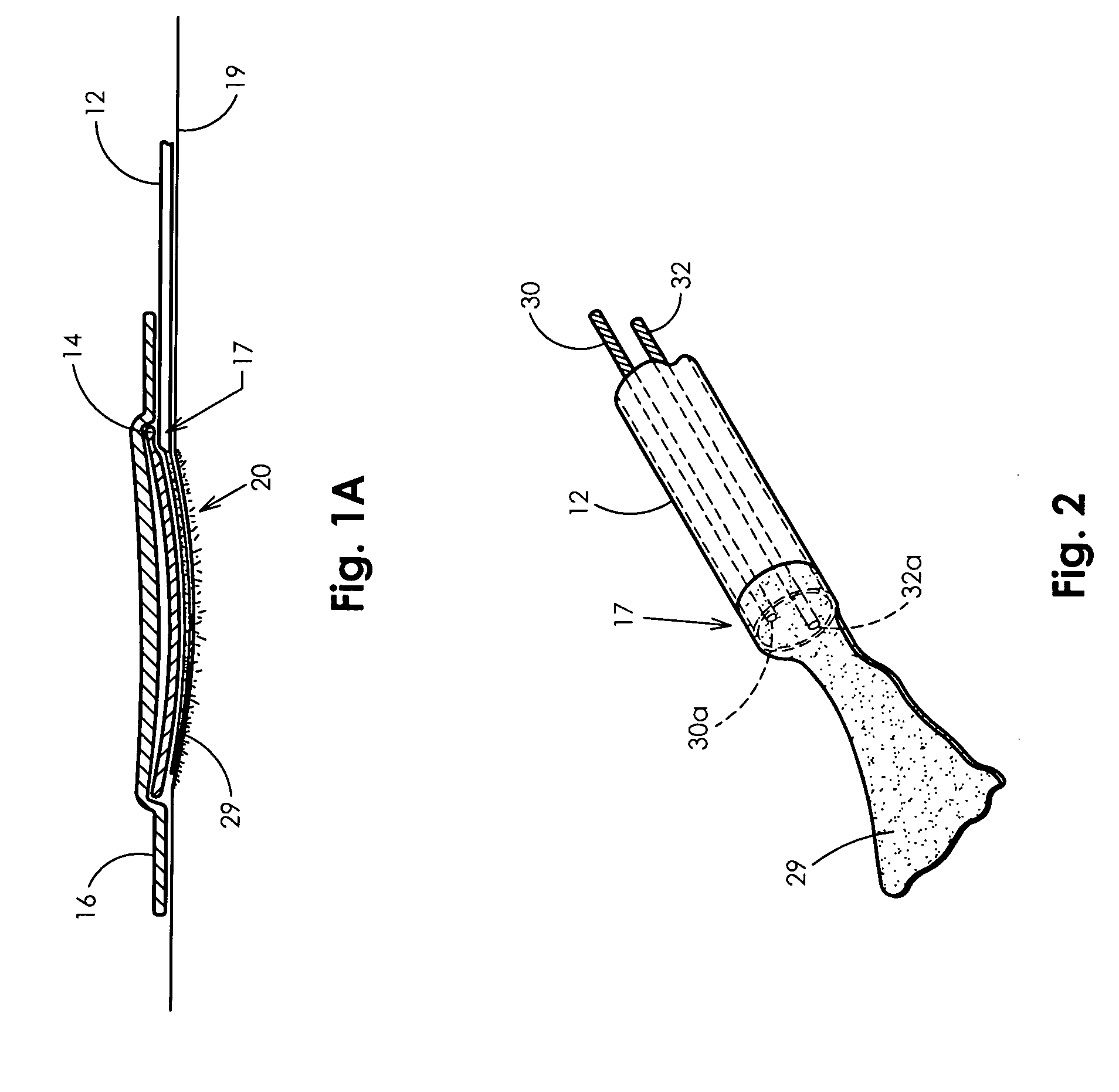Apparatus and methods for controlling tissue oxygenation for wound healing and promoting tissue viability
- Summary
- Abstract
- Description
- Claims
- Application Information
AI Technical Summary
Benefits of technology
Problems solved by technology
Method used
Image
Examples
Embodiment Construction
[0023]A preferred embodiment of the present invention, tissue oxygenation system for the healing of damaged tissue and to promote tissue viability, will now be described in detail with reference to the figures.
[0024]FIG. 1 is a perspective view of several primary components of the present invention according to the preferred embodiment. The present invention includes a monitoring unit 10, an electrochemical oxygen concentrator 11, oxygen delivery tubing 12, moisture absorbent dressing 14, and vapor dressing 16. Preferably, oxygen delivery tubing 12 is connected at the proximal end 15 of the long, kink resistant tubing to the monitoring unit 10. The monitoring unit 10 has a small, lightweight housing which is portable and may be discretely worn by the patient in a pocket or attached to a belt.
[0025]The monitoring unit 10 includes within the housing 13 a microprocessor 58 (see FIGS. 5 and 7), a power management system 52, pressure 56 and temperature 57 sensor interface(s), a flow rate...
PUM
 Login to View More
Login to View More Abstract
Description
Claims
Application Information
 Login to View More
Login to View More - R&D
- Intellectual Property
- Life Sciences
- Materials
- Tech Scout
- Unparalleled Data Quality
- Higher Quality Content
- 60% Fewer Hallucinations
Browse by: Latest US Patents, China's latest patents, Technical Efficacy Thesaurus, Application Domain, Technology Topic, Popular Technical Reports.
© 2025 PatSnap. All rights reserved.Legal|Privacy policy|Modern Slavery Act Transparency Statement|Sitemap|About US| Contact US: help@patsnap.com



